
Dynamic Adjustments of Jackson Lake Dam Releases
Published April 03, 2025

Ian Fletcher at Hidden Falls
This blog post is based on a presentation held on January 30, 2025.
My name is Ian Fletcher. I am a third-year economics PhD student from Wyoming. Growing up, I spent countless trips exploring Jackson Hole and Colter Bay, which sparked my research interest in Jackson Lake and Jackson Lake Dam.
When governmental agencies make environmental policy decisions, they typically focus solely on physical factors in their cost benefit analyses. While this approach can identify optimal solutions on paper, it often overlooks a crucial challenge: securing public support for implementation.
For example, consider Jackson Lake during drought conditions. Policymakers might recommend reducing water releases to maintain higher lake levels than normal – a solution that seems logical from a purely physical perspective. However, this decision relies on a large assumption that Idaho farmers can and will reduce their water usage while maintaining their growing production.
My research examines this gap between technical solutions and practical implementation. In this project I explore why behavioral and economic factors should be integrated into environmental decision-making, specifically highlighting how shocks to physical conditions and human behaviors can lead to similar policy decisions. Although this doesn’t directly address the public support question, it begins to shift policy decisions in the right direction by including behavioral inputs.
Different Users, Different Needs
Jackson Lake Dam initially served as flood protection for the Jackson Hole region. Today, it primarily supports Idaho agriculture, though upstream users are demanding more of a say in decision-making.
Downstream users consist mainly of Idaho farmers and irrigators, with some recreational fishing and water recreators along the river. Upstream, Grand Teton National Park visitors and Jackson Hole residents believe the water would be best kept in the park for ecosystem services, begging the question whether this shift in use of the dam benefits the entire ecosystem.
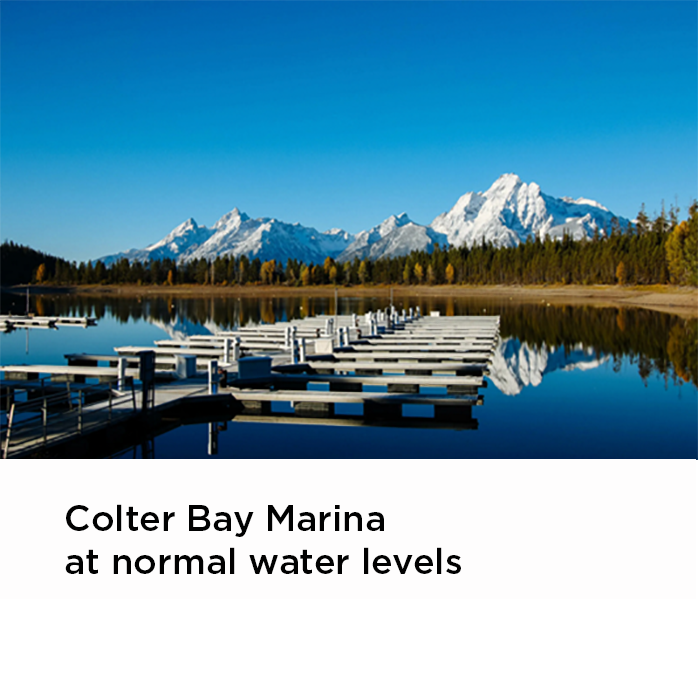
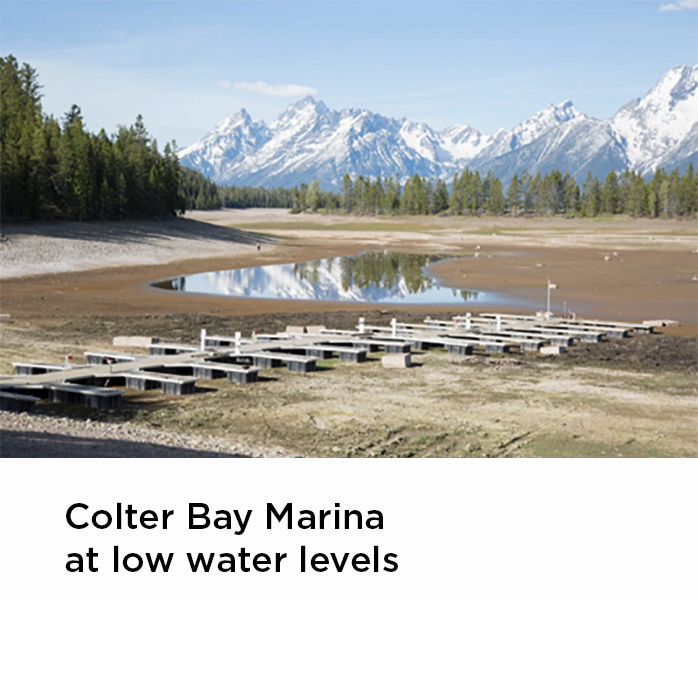
When agricultural demands cause lake levels to drop dramatically (compare this blog post on the effects of low water levels), upstream users raise concerns about water allocation efficiency and unaccounted environmental impacts.
This situation represents a classic trade-off: Wyoming stakeholders favor natural river flows that preserve scenic and ecological values, while Idaho and Oregon users depend on the Snake River for agricultural productivity.
Our Approach
Legally, the Snake River Compact grants Idaho users the right to 94% of Jackson Lake’s water. However, these rights operate under the “beneficial use” doctrine, requiring the water to be utilized in ways that maximize benefits across the system.
Most climate models, including ours, project significant water reductions in the coming years. This not only makes current management decisions timely but also suggests Idaho water rights holders may become more resistant to any proposed changes.
Our research questions whether current agricultural water usage truly represents “beneficial use” when considering the entire ecosystem. More importantly, we show how shocks to both physical and behavioral inputs in the model lead to very similar policy decisions. By using a joint welfare function in our analysis, combining upstream and downstream tradeoffs we begin to challenge how to best define and measure optimal water allocation in shared watersheds.
What Goes in, Must Come Out
Jackson Lake follows a seasonal cycle – filling during the summer from mountain runoff and declining in the fall as agricultural demand continue after snow melt dries or freezes up. Our model assumes past management has been optimal, using the long-term average water level as our baseline “equilibrium.”
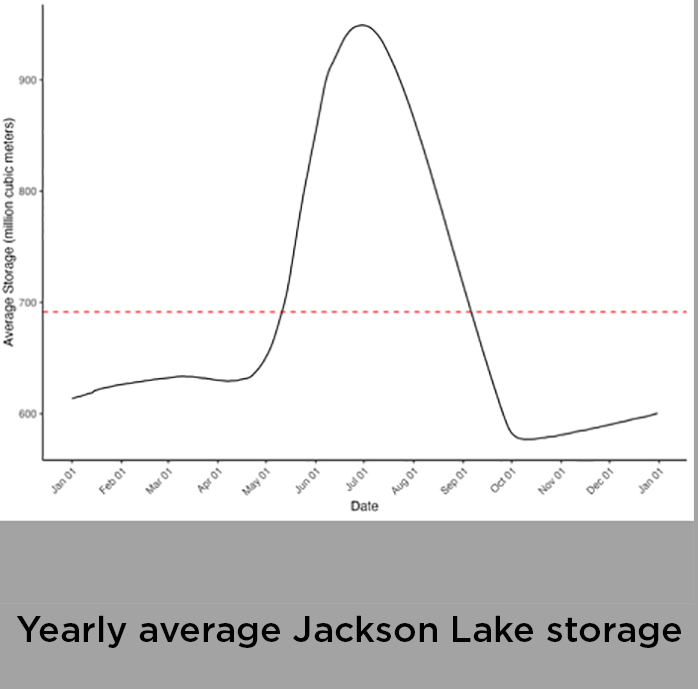
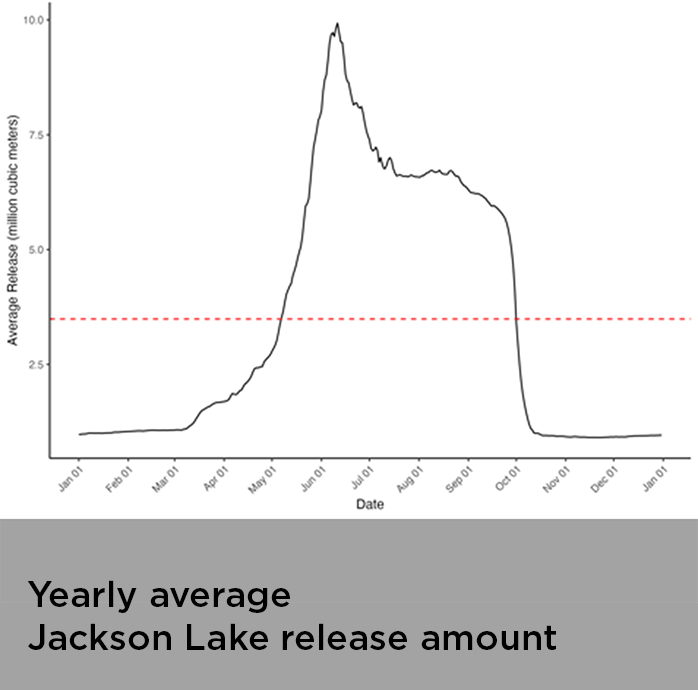
Our research question is straightforward: How should dam operators adjust water releases when environmental conditions or stakeholder needs change? We take a broad view rather than focusing on individual users, examining how total lake volume and overall water releases create collective benefits across the system.
The model adopts the beneficial use doctrine by assuming managers aim to maximize benefits for all users – essentially a measure of total social welfare. This benefit comes from both stored water (supporting recreation and ecosystem services) and released water (supporting agriculture).
Like traditional water models, ours includes the dynamics of the physical system, showing how the water levels evolve to inflows (snow melt and rivers) and outflows (releases and evaporation). However, we also include upper and lower release limits to start incorporating real-world legal and political considerations often missing from purely physical models. While the upper limit is simply the dam’s maximum release capacity, the lower limit varies. At minimum, it must maintain basic river flow, but some stakeholders advocate changing the definition of basic river flow to support fish populations – illustrating how human values increasingly influence water management decisions.
What is water worth (to you)?
Imagine there was one more unit of water in Jackson Lake. What should we do with it? Our research establishes a simple decision rule: compare the benefit of releasing that additional unit against the opportunity cost of not storing it. If the value to downstream users exceeds the opportunity cost of holding it – release it; otherwise, hold it.
This creates a natural balancing mechanism. When water levels fall below the long-term average, we should reduce releases to restore equilibrium. When levels exceed this average, we should increase releases.
The key factor is the opportunity cost. Through our analysis (changing one parameter at a time), we identified how changes in both physical and behavioral parameters influence optimal decisions. For instance, if downstream agricultural value increases by 10%, the model recommends immediately increasing releases and accepting lower lake levels – because the benefit now outweighs the opportunity cost of holding the water.
Interestingly, behavioral factors can produce effects similar to physical changes. Reduced mountain runoff (a physical change) requires lowering releases to maintain lake levels. But increased value placed on recreation by upstream users (a behavioral change) leads to the same outcome – both increasing lake levels by very similar amounts.
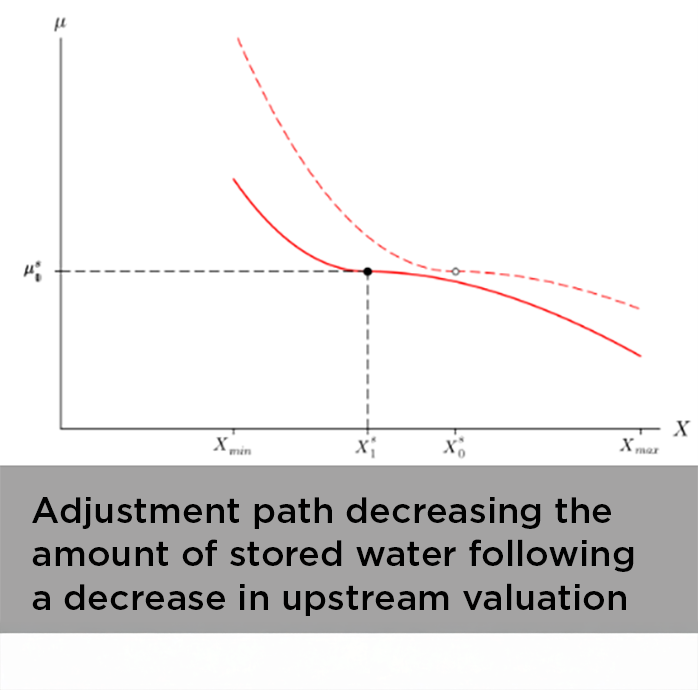
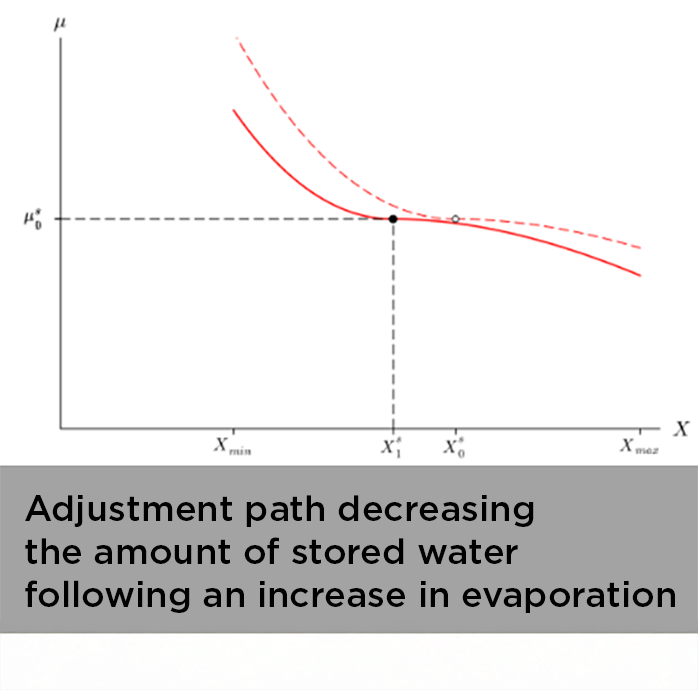
What if we mess up?
Perfect decision-making rarely happens in complex systems. Suboptimal outcomes occur when artificial constraints are imposed (like minimum release requirements advocated by some stakeholders) or when managers respond slowly to changing conditions.
Our model demonstrates that delayed responses to system changes create welfare losses that grow exponentially over time. The longer we wait to adapt management approaches to new realities, the greater the collective cost.
This highlights why baseline measurements matter. To quantify these costs accurately, we need models that account for both physical and behavioral factors. Traditional water management focused primarily on physical components, but our research shows that stakeholder values and behaviors drive decisions that impact the system just as significantly. As researchers and policymakers, we must embrace this complexity and develop integrated approaches that respect both the physical realities and human dimensions of water resource management.
